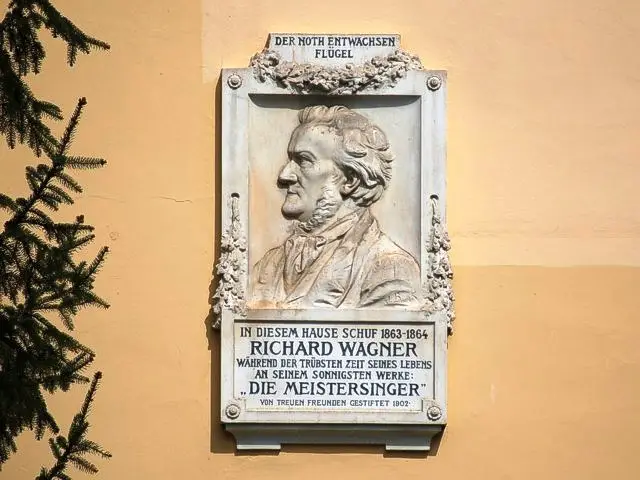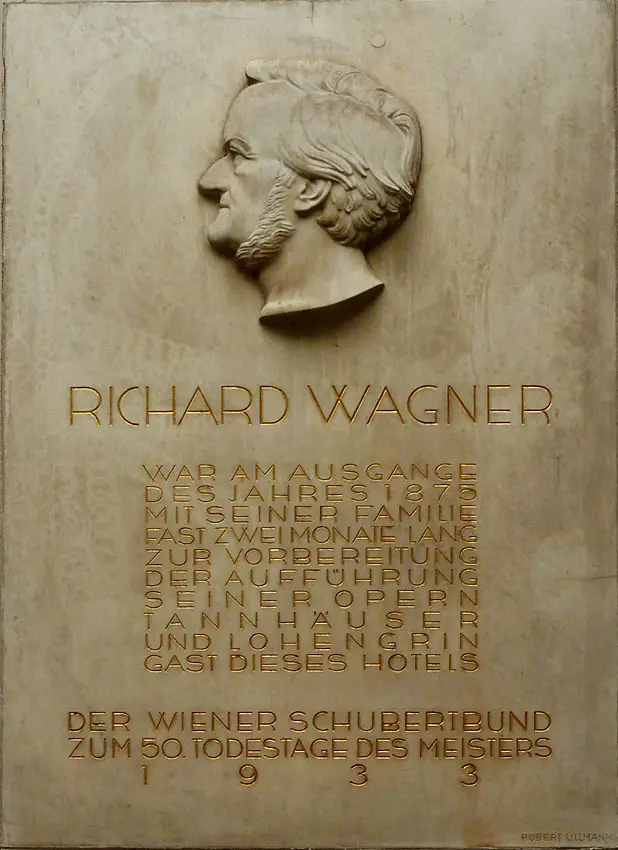Wagner in Vienna
The series about historical places of opera art. Get to know exciting excursion and travel ideas for opera lovers. This time: Wagner in Vienna.
All Destinations on google maps with links to detailed Blogposts:
Richard Wagner in Vienna

Richard Wagner was a frequent visitor to Vienna. Already at the age of 19 his first long journey took him to the city on the Danube. Later his opera performances often took him to the Viennese venues, where he celebrated great triumphs (Lohengrin and Tannhäuser) but also experienced one of his greatest ignominies (Tristan):
Wagner hoped to solve his money problems with the performances of the just finished “Tristan”. But one theater after another refused to stage it. The last hope of the heavily indebted Wagner was Vienna. But after many months, 77 rehearsals and further bill debts, the end came: the work was unperformable, the singers hopelessly overtaxed, was the verdict of those involved. Without the income from a performance, he was threatened with prison because of his debts. Before he was thrown into the Vienna debtors’ prison to force payments to his creditors, he fled the city (allegedly in drag), which, next to the Tannhäuser fiasco in Paris, was Wagner’s greatest life ignominy and led to his greatest life crisis. After his departure, he wrote to a Viennese friend: “A good, truly helpful miracle must come my way now, otherwise it’s all over!” The miracle did indeed occur in the form of Ludwig II.
In addition, his most bitter critic, Eduard Hanslick, was Viennese and from there made his life difficult with his sharp pen. Wagner took his revenge with the famous Viennese reading of the “Meistersinger von Nürnberg” (see below).
LINK TO THE COMPLETE WAGNER BIOGRAPHY
To the travel guide VIENNA for classic and opera fans
Destination Hadikgasse 72
During this time, Wagner lived for several months on Hadikstrasse in very luxurious conditions, which, as usual, he could not afford. As always, he furnished his apartment with sinfully expensive furnishings. He also received the young Brahms there and worked on the “Meistersinger von Nürnberg”. Today, a plaque commemorates this time with the text: “Misery made him grow wings. In this house Richard Wagner worked in 1863-1864 on his sunniest work during the bleakest period of his life: ‘Die Meistersinger’ donated by loyal friends in 1902.
Destination Hotel Imperial
In 1875 Wagner came to Vienna as a European celebrity together with his entourage for a performance of Tannhäuser. He stayed in the city’s first luxury hotel, the Imperial, which had been opened shortly before and was the abode of kings and the super-rich. As befitted Wagner (who suffered from pressing financial worries because of the financing of the Festspielhaus) immediately moved into a 7-room suite including a specially purchased concert grand piano. He visited the Imperial and Vienna for one last time the following year. The Imperial saw kings and world artists, but only one was granted a portrait relief on the hotel facade: Richard Wagner.
Musical background: Wagner’s reading of the “Meistersinger”
The story of this work is the singer contest of the Meistersinger where the winner is awarded the beautiful daughter of the Meistersinger Veit Pogner. The bland, aging Merker (whose job it is to count the singing mistakes) Sixtus Beckmesser applies but subsequently makes a mockery of himself. Wagner originally called the character of Beckmesser “Hans Lick” or “Veit Hanslich”, referring to the feared Viennese music critic Hanslick. The latter had been fond of Wagner in his early years and was one of the first to write a friendly review of the freshly published “Tannhäuser” in 1845. He gained the composer’s trust and in the same year had insight into the first sketches of the “Meistersinger”.
Subsequently, he turned away from Wagner’s music and wrote bitter words about the “Lohengrin” (“poverty of musical thought”) or the “Tristan” (“the systemized non-music”). Maliciously, Wagner invited the critic to the reading in Vienna in 1862, when he recited the complete text of the “Meistersinger” for the first time in a small circle. Hanslick understood the allusion (the character was still called Hans Lick there) and later became a powerful adversary against the New Germans around Wagner as a spokesman for the conservatives around Brahms.
Listen to how Beckmesser mishandles his song of praise and becomes a laughing stock:






Leave a Reply
Want to join the discussion?Feel free to contribute!